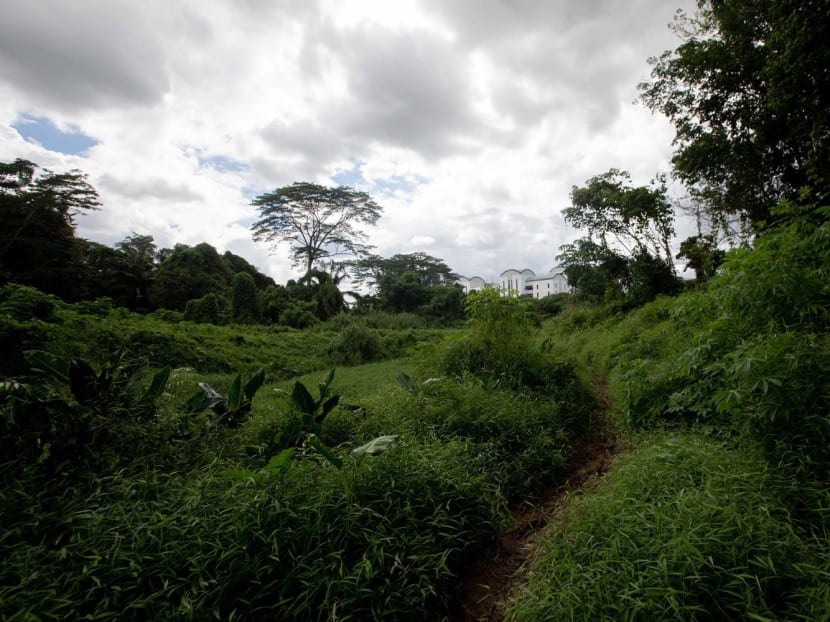Not fallen on deaf ears: Nature lobbyists cheer LTA’s plans to relocate Cross Island Line MRT station to protect wildlife
SINGAPORE — Nine years after they argued against the construction of the Cross Island Line, nature groups and environmentalists said they were relieved that at least some changes have been made to reduce environmental damage due to the second phase of the MRT line's construction. One environmentalist called the latest changes “unprecedented”.

- Nature groups and environmentalists were glad to see the authorities make some changes to minimise the construction impact of part of an MRT line
- This is for the second phase of the Cross Island Line
- In its latest environmental impact study report, LTA said the upcoming Maju station will be relocated
- It was supposed to be within the boundaries of Clementi Forest at first and will be moved to underneath Clementi Road
- Tunnels between King Albert Park station and Maju station were also realigned to reduce the ecological impact on wildlife
SINGAPORE — Nine years after they argued against the construction of the Cross Island Line, nature groups and environmentalists said they were relieved that at least some changes have been made to reduce environmental damage due to the second phase of the MRT line's construction. One environmentalist called the latest changes “unprecedented”.
Speaking to TODAY on Thursday (Oct 13), Dr Shawn Lum, president of the Nature Society (Singapore) who has been involved in consultations with the authorities since the start of the project, said that the engagement process and outcome of the latest environmental impact study were a far cry from 2013 when nature groups were “blindsided” by the announcement of the Cross Island Line.
“The whole approach of working together from different perspectives but for the best possible outcome in a collaborative fashion — I don’t think anybody would have anticipated that in 2013,” Dr Lum said.
The environmental impact study, released on Monday by the Land Transport Authority (LTA) on its website, details the potential impact that the second phase of the Cross Island Line would have on the nature sites, including Clementi, Maju and Windsor forests. The study was conducted by engineering consulting firm Aecom.
The report said that the location of the upcoming Maju station on the Cross Island Line was changed from being within the boundaries of Clementi Forest to beneath Clementi Road as an underground tunnel. Clementi Forest had been the subject of national debate last year, after some people petitioned against zoning the forest for housing.
Tunnels between King Albert Park station and Maju station were also realigned to reduce the ecological impact on wildlife. The report noted that the critically endangered pangolin and the chocolate sailor, a nationally vulnerable butterfly species in Singapore, were among the flora and fauna recorded in Maju forest.
Nature groups were up in arms when the train line was announced in 2013 because construction work may harm rare fauna and flora in the central catchment area, which includes four reservoirs.
In 2019, the Government eventually decided to run the line directly under the Central Catchment Nature Reserve, instead of around it, after studying the impact of the alignment on the environment.
The second phase of the Cross Island Line, unveiled last month, features six underground stations in areas such as Turf City, West Coast and Jurong Lake District. Construction works for the MRT stations will begin next year, with stations opening by 2032.
The Cross Island Line will be the country's longest fully underground line at more than 50km long. When operational, it will have the highest number of interchange stations, with almost half the stations on the line being linked to existing MRT stations.
WHAT NATURE LOBBYISTS SAY ABOUT THE CHANGES
Other environmentalists who spoke to TODAY also agreed that the authorities had become more open to engagement over the years and added that they welcomed the outcome of the “comprehensive” study.
“It’s wonderful to note that an important habitat with a concentration of native pitcher plants will escape the development.Dr Vilma D'Rozario, co-director of the Singapore Wildcat Action Group”
Among the outcomes that Dr Lum said he was pleased about was the decision to move worksites away from the most sensitive areas where there are endangered species such as the Raffles’ banded langur, and the reduction of land used to build shafts down to the tunnels.
Dr Vilma D'Rozario, the co-director of the Singapore Wildcat Action Group, also called the study “comprehensive” and added that she was glad about the relocation of Maju station, as well as the relocation and reduction in sizes of some worksites.
“It’s wonderful to note that an important habitat with a concentration of native pitcher plants will escape the development,” she added.
The report stated that a worksite between the areas of Clementi Forest and Holland Plain is one of the last remaining locations in Singapore for a variety of native pitcher plant species outside of nature reserves here.
Primate researcher Andie Ang, who was mostly involved in engagements relating to a worksite in the Windsor Forest, said that the reduction of the worksite’s size by half and its partial shift to the Singapore Island Country Club means that a “significant portion” of the forests, which are a part of the habitat of the critically endangered Raffles’ banded langurs, can be kept.
Even with the latest changes, the lobbyists said that more could be done.
Mr Ho Xiang Tian, founder of environmental advocacy group LepakinSG, said it was unfortunate that a freshwater marsh in Holland Plain will be completely destroyed for a worksite, given that it is possibly the last freshwater marsh in Singapore.
The compensation measure by LTA is to create a new marsh in the vicinity. It is “not the best possible outcome”, but Mr Ho — who did not take part in the consultations — acknowledged that it is the best the agency can do given the site constraints and alignment of the Cross Island Line.
Dr Ang is hoping for LTA to conduct a follow-up study of its measures after the completion of the project, to see if these have achieved their intended objectives.
WILL CHANGES AFFECT COSTS?
Construction experts approached by TODAY said that the changes to the Cross Island Line are unlikely to result in significantly higher costs.
Associate Professor Daniel Wong, from the department of built environment at the National University of Singapore, said that project costs for the MRT line could rise by up to 5 per cent due to more environmental impact studies or surveys done before the calling of tender.
However, the cost of construction itself may be mitigated by contractors’ competitive tendering process, as well as refinements to the design that can keep costs low, he added.
Similarly, Mr David Ng from the Institution of Engineers, Singapore said that with Maju station shifted to the road, there will be extra costs incurred, but these “will not be a significant portion” of the overall construction bill.
However, construction works could become more challenging with the added requirements in place to construct the Cross Island Line, including limited working hours and containing the work area so that the movements of wildlife are not disrupted, he added.











